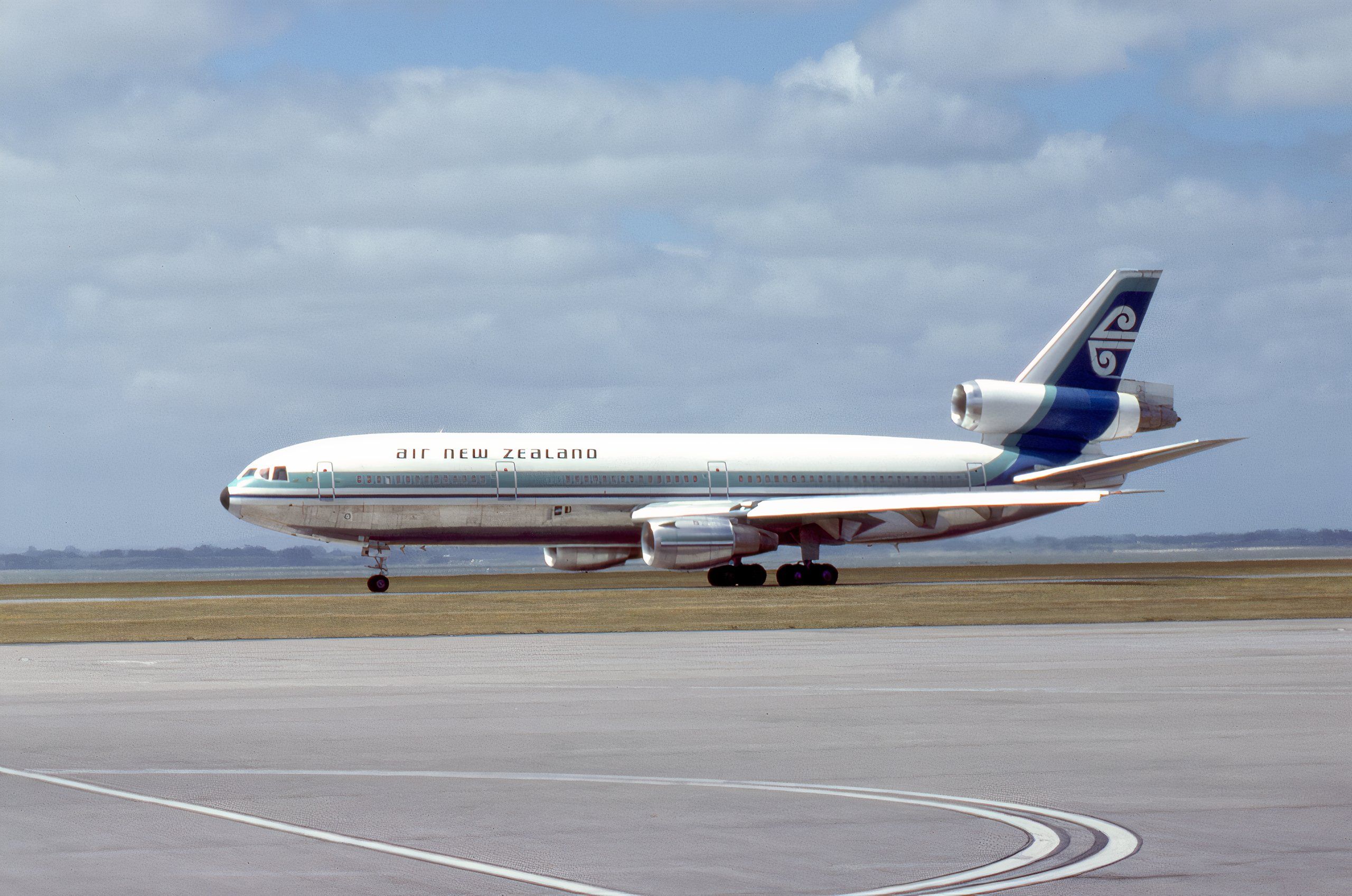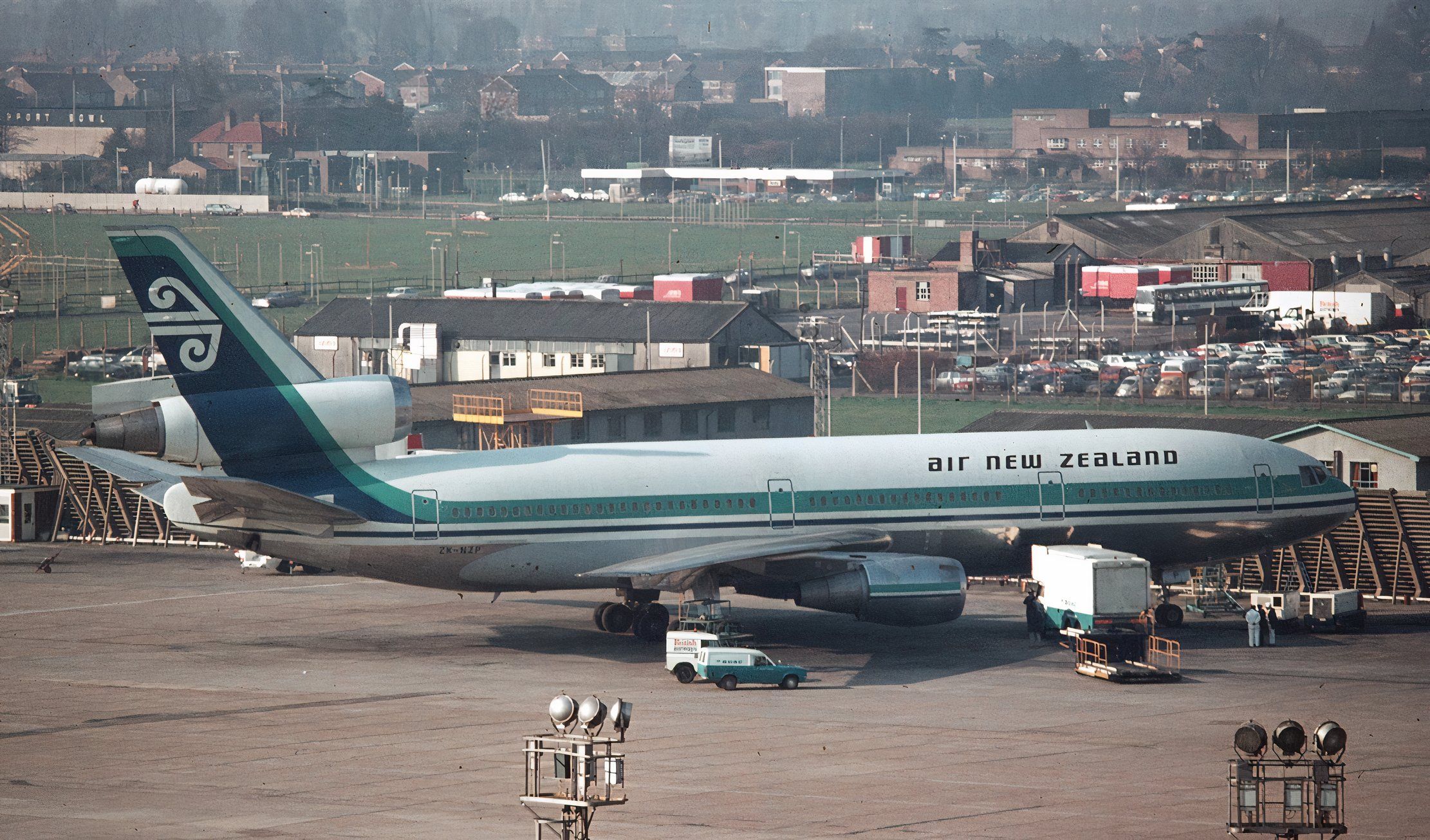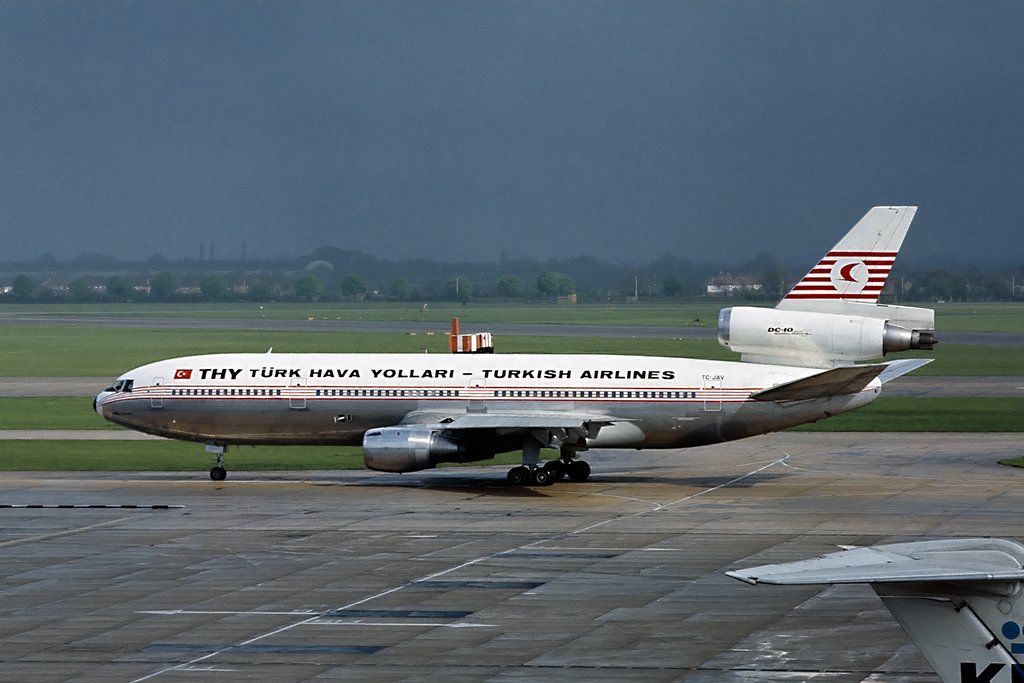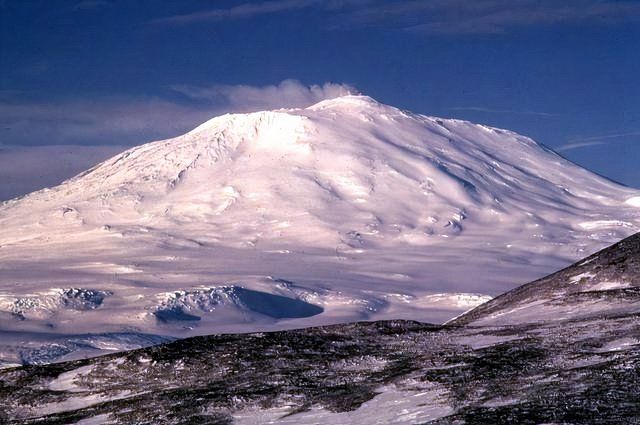Summary
- Air New Zealand formed an interchange agreement with British Airways to operate DC-10s between LHR and LAX.
- Air New Zealand flights with DC-10s became popular due to comfortable configurations and layouts.
- Following the tragic Flight 981 crash, Air New Zealand decided to replace DC-10s with Boeing 747s.
In the early 1970s, the British Overseas Aircraft Corporation (BOAC) was looking for a way to compete with Pan American World Airways (Pan Am) and Trans World Airlines (TWA) on flights between London Heathrow Airport (LHR) and Los Angeles International Airport (LAX). At the time, the two American carriers were using widebody Boeing 747s on the route, leaving BOAC to compete, flying smaller Boeing 707s and VC-10s.
At the time, Los Angeles International Airport (LAX) quickly became the second most important United States gateway after New York’s John F. Kennedy International Airport (JFK). Under the terms of the 1946 bilateral air transport arrangement, direct flights between LHR and LAX were not permitted. A way around the agreement would be a flight between Australasia and the United Kingdom with a stop in Los Angeles.
Air New Zealand takes delivery of its first McDonnell Douglas DC-10.
In the late 1960s, Air New Zealand flew between Auckland Airport (AKL) and Los Angeles International Airport (LAX), stopping at Nandi and Honolulu using Douglas DC-8s. In 1970, looking to increase its capacity on Transpacific flights, Air New Zealand placed an order for three McDonnell Douglas DC-10 trijets. When the first aircraft arrived in January 1973, it was painted with the now widely recognizable Koru-inspired logo livery.
For a small airline like Air New Zealand, the DC-10s and the spare parts they needed were a considerable investment. Deploying the DC-10s on the AKL to LAX route did not go unnoticed by BOAC, which saw an opportunity to partner with the Kiwi airline. After lengthy negotiations, the two airlines signed a four-year interchange agreement on April 26, 1975.
BOAC and BEA merge to form British Airways
On March 31, 1974, BOAC merged with British European Airways (BEA) to become British Airways. In keeping with BOAC’s agreement with Air New Zealand, the Kiwi airline would fly its DC-10s to LAX with stops at either Fiji, Tahiti, or Hawaii to Los Angeles, and British Airways would then fly the DC-10s between LAX and LHR.
The interchange agreement now allows British Airways to operate direct flights between London and the West Coast of the United States. The agreement also dictated that Air New Zealand buy more DC-10s to meet the expected passenger demand on the LHR-LAX route. Having no DC-10s in its fleet until taking over British Caledonian in 1988, British Airways pilots, cabin crew, and maintenance engineers all needed DC-10 training. All British Airways crews needed to satisfy NZCAD inspectors of their competence before being allowed to operate the DC-10s.
A third pilot was added for the LAX to LHR route
Despite the interchange agreement beginning on April 26, 1975, the first flight between Auckland and London occurred 11 days later. British Airways added a third pilot to act as a relief officer because the LAX to LHR flight took 11 hours and five minutes plus briefing time.
By the summer of 1977, passenger demand on the route had exceeded the capacity of the 243-seat DC-10. To solve the problem, British Airways negotiated an amendment to the interchange agreement to allow it to use its new Boeing 747s on the LHR to LAX leg during the summer alongside the DC-10 flights.
During the interchange agreement, which lasted until late April 1979, passengers liked flying on Air New Zealand’s DC-10-30s and how they were comfortably configured. Air New Zealand DC-10s had 24 first class seats in a 2-2-2 layout and 219 economy class seats in a 3-4-3 up front and a 3-3-3 configuration at the back of the plane.
The DC-10 had a bad reputation
One of the concerns passengers had when flying on a DC-10 was that its rear cargo doors opened outwards. To handle pressurization, the doors needed heavy-duty-looking mechanisms to keep them closed. On June 12, 1972, American Airlines Flight 96 lost a rear cargo door, forcing the pilots to make an emergency landing at Detroit Metropolitan Airport (DTW).
Two years later, a Turkish Airlines DC-10 suffered a similar fate near Paris, France, but the passengers and crew were not as fortunate this time. All 11 crew and 335 passengers died in the resulting crash, which at the time was the deadliest air crash in history. The crash of Turkish Airlines Flight 981 caused many passengers to not want to fly on the DC-10. While this was a blow to airlines like Air New Zealand, another fatal crash would make Air New Zealand decide to replace its DC-10s with Boeing 747s.
Air New Zealand Flight 901
On November 28, 1979, Air New Zealand Flight 901 departed Auckland Airport (AUK) at 08:00 on a sightseeing flight over Antarctica. Designed and marketed as a unique sightseeing experience over the South Pole, the plane would return to New Zealand, landing in Christchurch 11 hours later. After refueling at Christchurch Airport (CHC), the plane would make the 464-mile flight to Auckland.
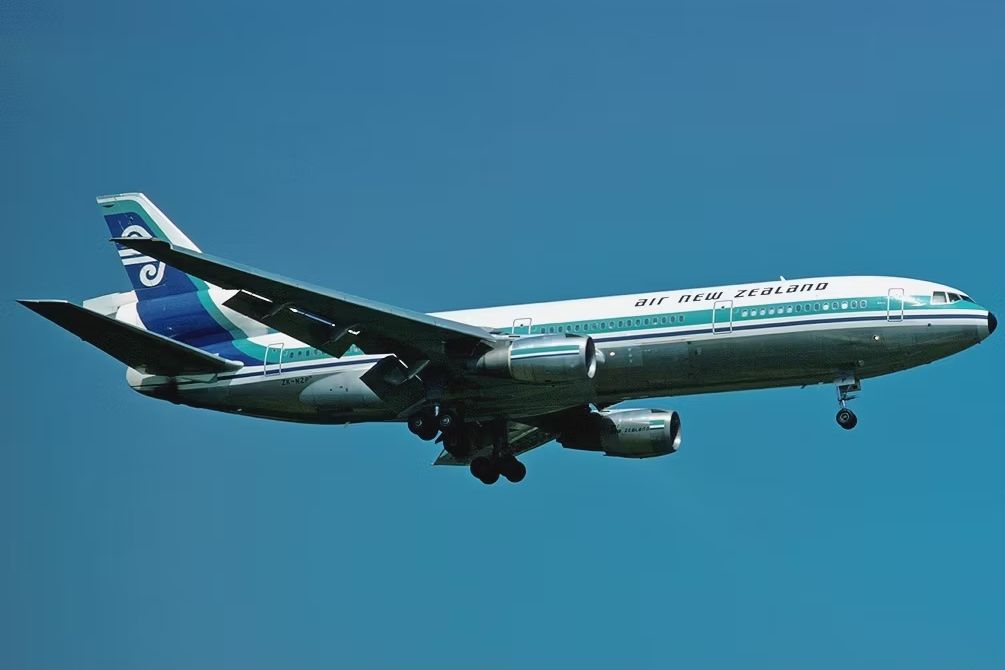
Related
Throwback: When Air New Zealand Used To Fly The McDonnell Douglas DC-10
The carrier briefly operated this famous trijet.
Despite having accumulated many flight hours on the DC-10, neither Captain Thomas Collins nor First Officer Gregory Mark Cassin had ever flown to Antarctica before. Nineteen days before the flight, both pilots attended a briefing and were given copies of the previous flight’s flight plan. Due to an error when the route coordinates were put into an Air New Zealand computer, the flight plan given to the pilots was wrong.
Another pilot who was also at the briefing noticed that the coordinates were wrong and told Air New Zealand to put the correct ones into the computer. Unfortunately, the pilots of Flight 901 were never informed of the changes. Because it was a sightseeing flight, the aircraft needed to fly at a low altitude. The frozen surface of Antarctica was the same color as the clouds, leading the pilots to think that Mount Erebus was the Ross Ice Shelf.
At precisely 12:49, the ground proximity warning system (GPWS) began sounding alarms that told the pilots to pull up. While the pilots immediately responded, it was too late. The plane crashed into the mountain at 1,467 feet, instantly killing all 257 passengers and crew onboard.
Air New Zealand stopped its Antarctica flight, and because nearly everyone in New Zealand would have known someone on the flight, the national flag carrier decided to replace its DC-10s with Boeing 747s.
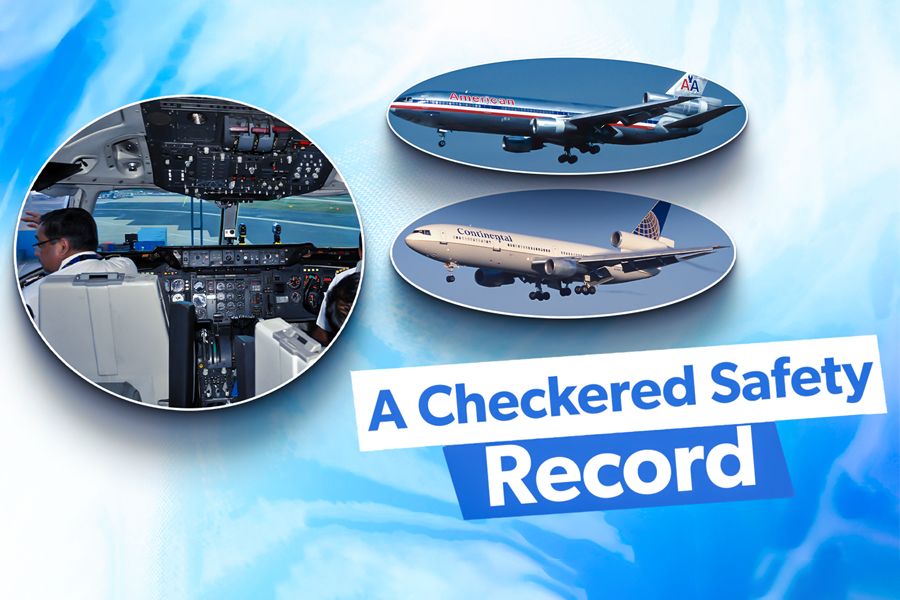
Related
Five Major Accidents That Marked The McDonnell Douglas DC-10’s Operational History
The trijet was involved in several major accidents throughout its history.


